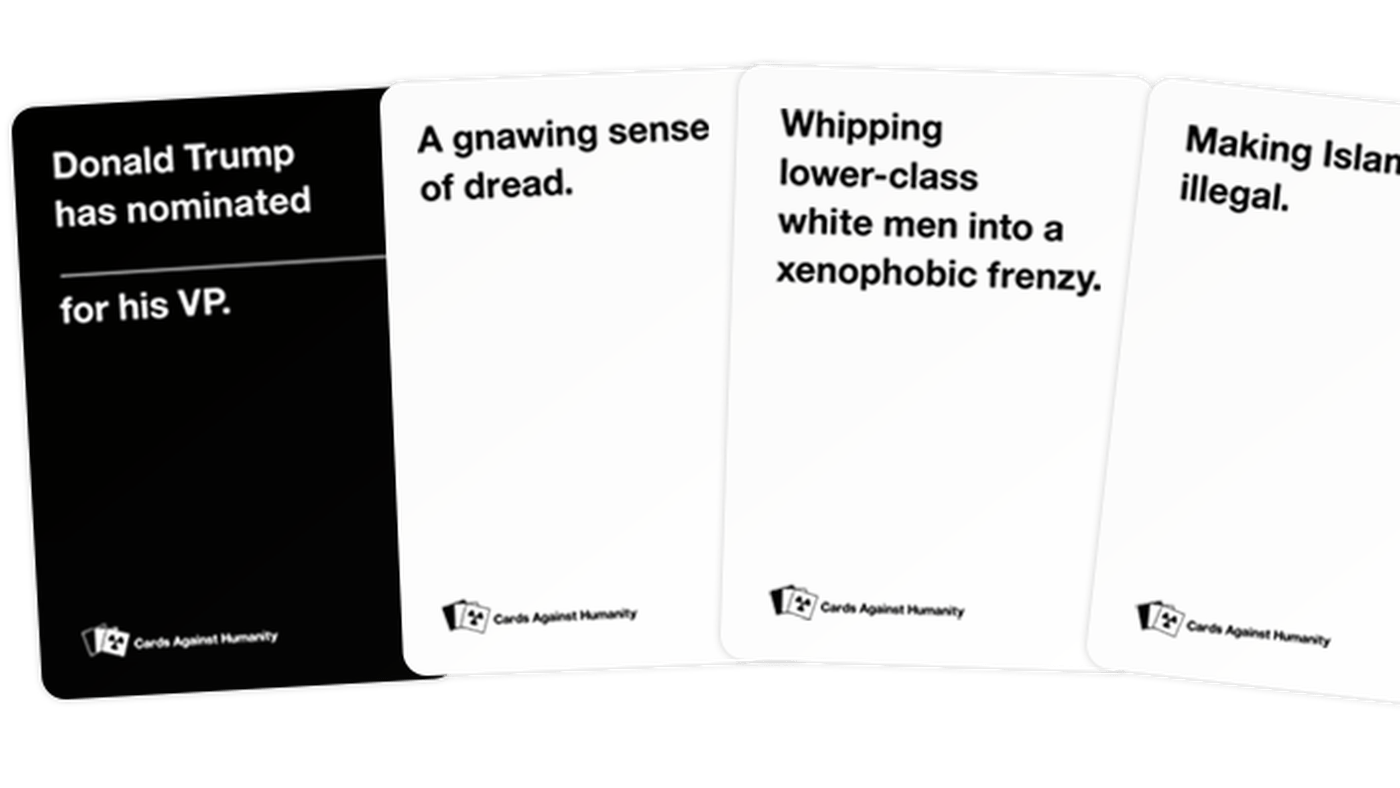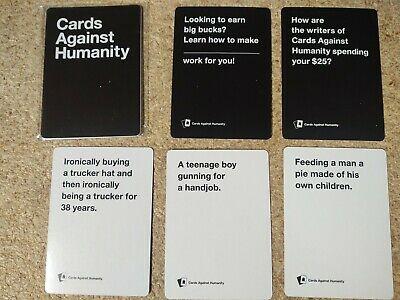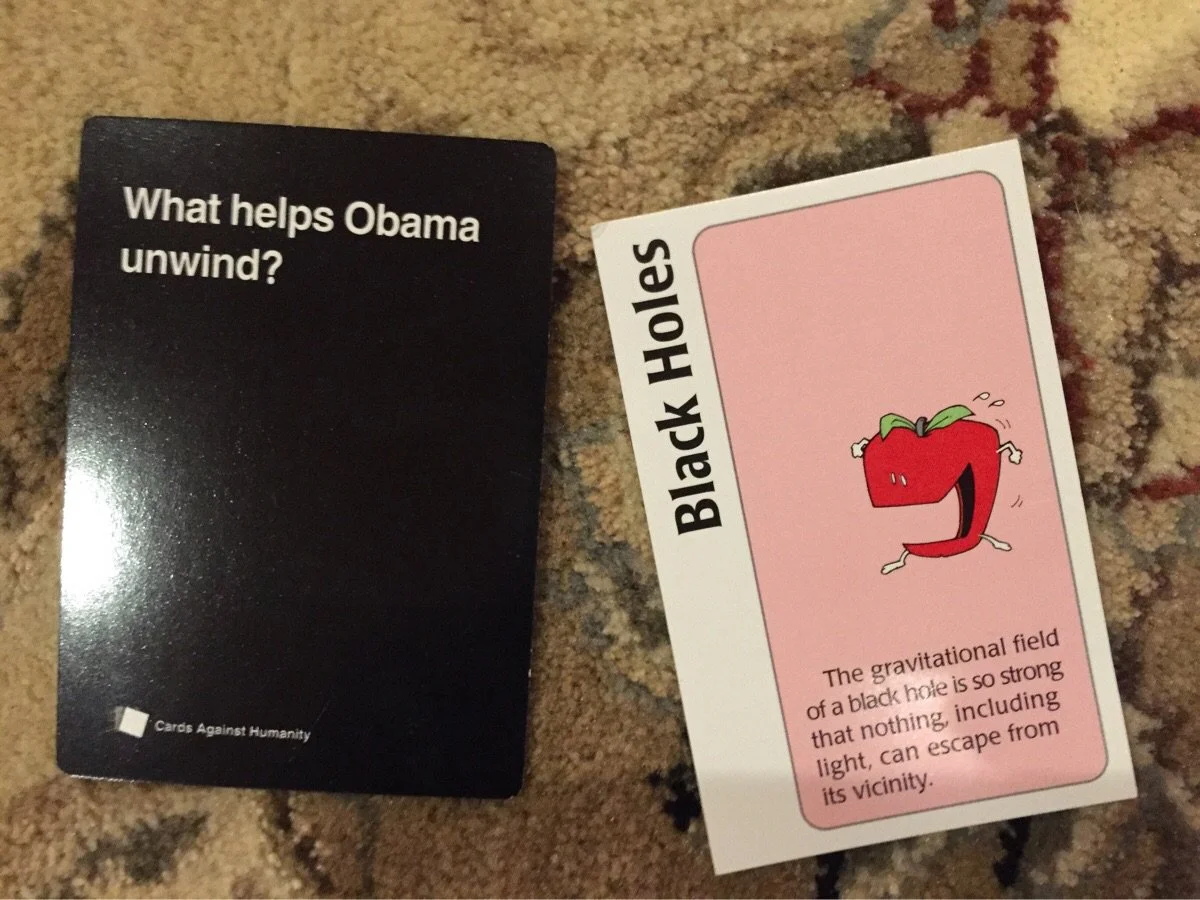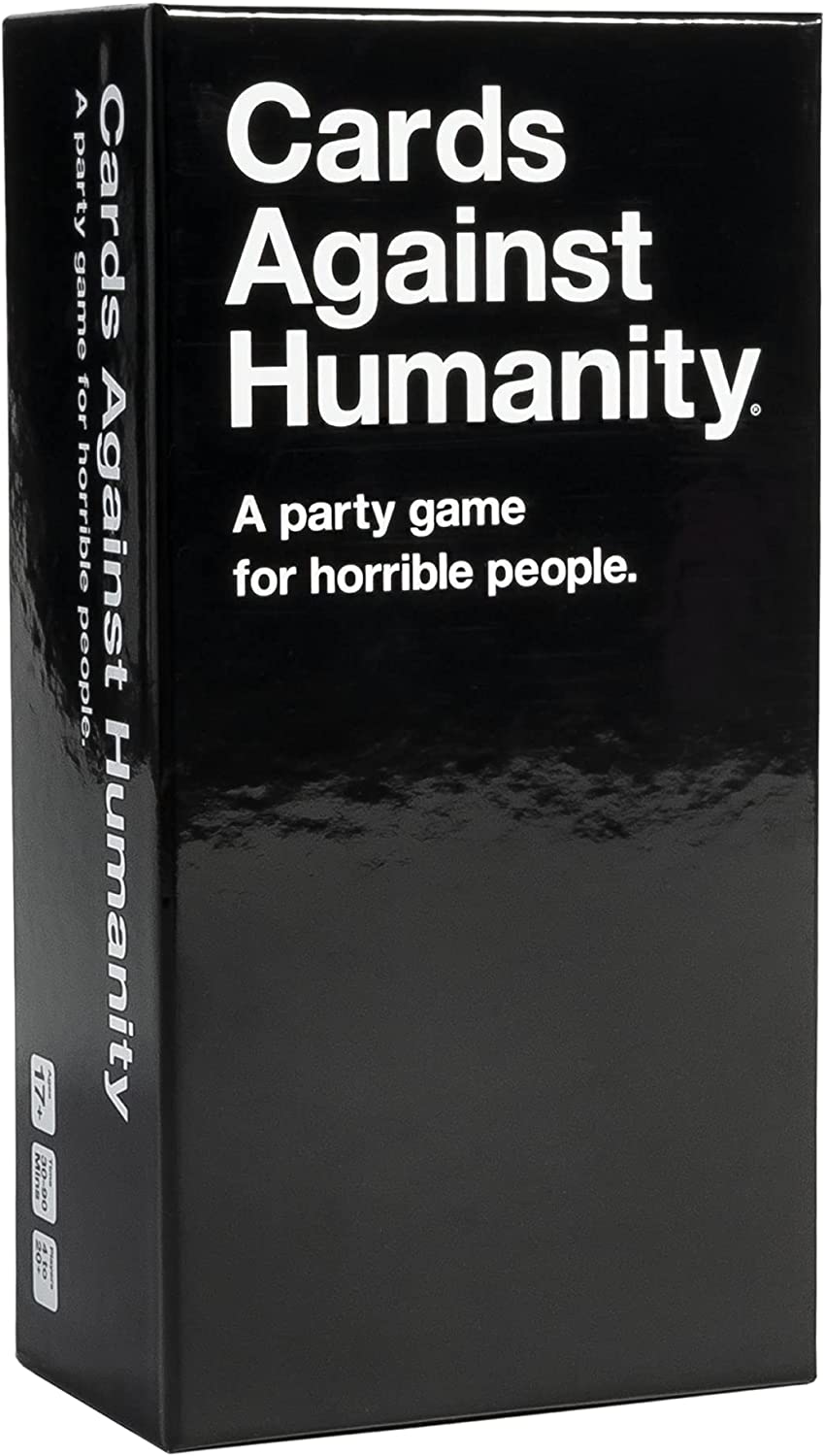For this assignment, I played Cards Against Humanity, an adult judging game published by Cards Against Humanity LLC in 2011. Each round players compete to form the funniest sentences with the white cards they have in their hands and a black card set on the table.

Players:
In terms of players, at least three are needed to play the game. Although there is technically no upper bound, the game is the most fun to play with around 5 to 8 players. Every round, one player is the Card Czar (judge) and the others compete to have the funniest answer. This dynamic where all players compete against each other makes Cards Against Humanity a multilateral competition.
Objectives and Outcomes:
Cards Against Humanity falls under the “outwit” objective category. Every round, the players are competing against each other to have the “funniest” sentence and be chosen by the judge. In that specific round, the judge acts more like a moderator and doesn’t have any specific objective in the game other than to pick the best sentence. Players have to be smart about which cards they use to form sentences because each person has a different sense of humor and reacts differently to different ideas and situations. In the end, the person that won the most amount of rounds (usually I play first to 5) wins the game, and so Cards Against Humanity is a Zero-sum game. The type of fun in this game is Fellowship as it is a game with a big social component. Players have to talk to make others laugh, talk to each other and ultimately be the “funniest”
Procedures and Rules:
In each round, one person is the judge (rotates clockwise). They play a black card and read the question or fill in the blank to the other players. All other players have to choose one (or multiple, depending on the round) white card and pass it face down to the Card Czar. Once everyone has played a white card, the judge turns over each white card and reads out the complete sentence. In the end, they pick the funniest sentence, and the player who played that white card keeps the black card indicating that they won the round. A new Card Czar is assigned and the rounds proceed in the same way. There are several variations and house rules that determine some of the procedures of the game. For example, with my friends, we each had 7 white cards. At the end of every round, if the player was not the Card Czar, they draw another white card so that they always have 7 in their hand.

Comparison:
Cards Against Humanity is very similar to several other games such as Apples to Apples. One of the biggest differences is the premise. Cards Against Humanity has a very distinct feel to it. Most of its cards have some form of “dark humor” that is in some cases offensive. On the other hand, Apples to Apples has an almost identical game mechanic, but the cards are much more wholesome, giving it a more family vibe. This difference is what determines the audience of the game. Because it involves a more blunt sense of humor, Cards Against Humanity is made for an older audience. Additionally, it makes sense to play it with friends, as one feels more comfortable playing more humorous cards. In my opinion, when playing with people I know, I find this game better than Apples to Apples. This is mostly because it allows for much more creativity and because me and my friends have a similar sense of humor which makes all rounds extremely enjoyable as we read out each sentence and laugh uncontrollably.

Compared to other card games, Cards Against Humanity doesn’t have much of a strategy to it besides learning people’s type of humor and playing cards that they would find funny.
Vulnerability:
Although it may not seem so at first, Cards Against humanity involves a lot of vulnerability. One must feel very comfortable with the group they are playing with, as some cards can be slightly offensive or deal with sensitive topics. To read these out loud and feel comfortable playing them, one must be in a way vulnerable. However, the fact that each card is played face down makes it so that no one knows who played each card, except for when the winner is revealed. This way, no one is afraid of “not being funny” because their card is not associated with them. I think this makes the game much more enjoyable and social as we were not afraid to play any card, even if we thought it wasn’t the funniest.
Improvements:
Although I find this game extremely fun to play with a group of close friends, there are some small tweaks to the procedures that I think would make it even better. A huge issue we noticed when playing was that some white cards simply weren’t funny. These never got played, or got played as: “I will be wasting a card this round”. Since each round only one card is picked up, players would slowly stock up on these “bad” cards and by the end of the game, it was noticeable that players were losing interest or were producing less “funny” sentences. A fix to this (which we implemented as a house rule) is that at the end of a round, a player can choose to discard a card and pick a new one. We played another round with this rule and found that the game was much more entertaining as people felt they had better options.
Another alternative that I wasn’t able to playtest is that players can pick up multiple cards after each round (say 2) and keep the one they find the funniest. This way, players would not stock up on “bad” cards as they always have the chance to pick the funniest one. However, a potential downside I see to this is that players would be able to see many cards and so they would slowly lose the “funny” effect.
Additionally, although I think it is a great fun game to play with close friends, it becomes a little more awkward when playing with strangers or people you do not know well. A fix could be to have cards be color-coded with themes/humor type. This way, the more “offensive” cards could be easily removed when playing with strangers.



